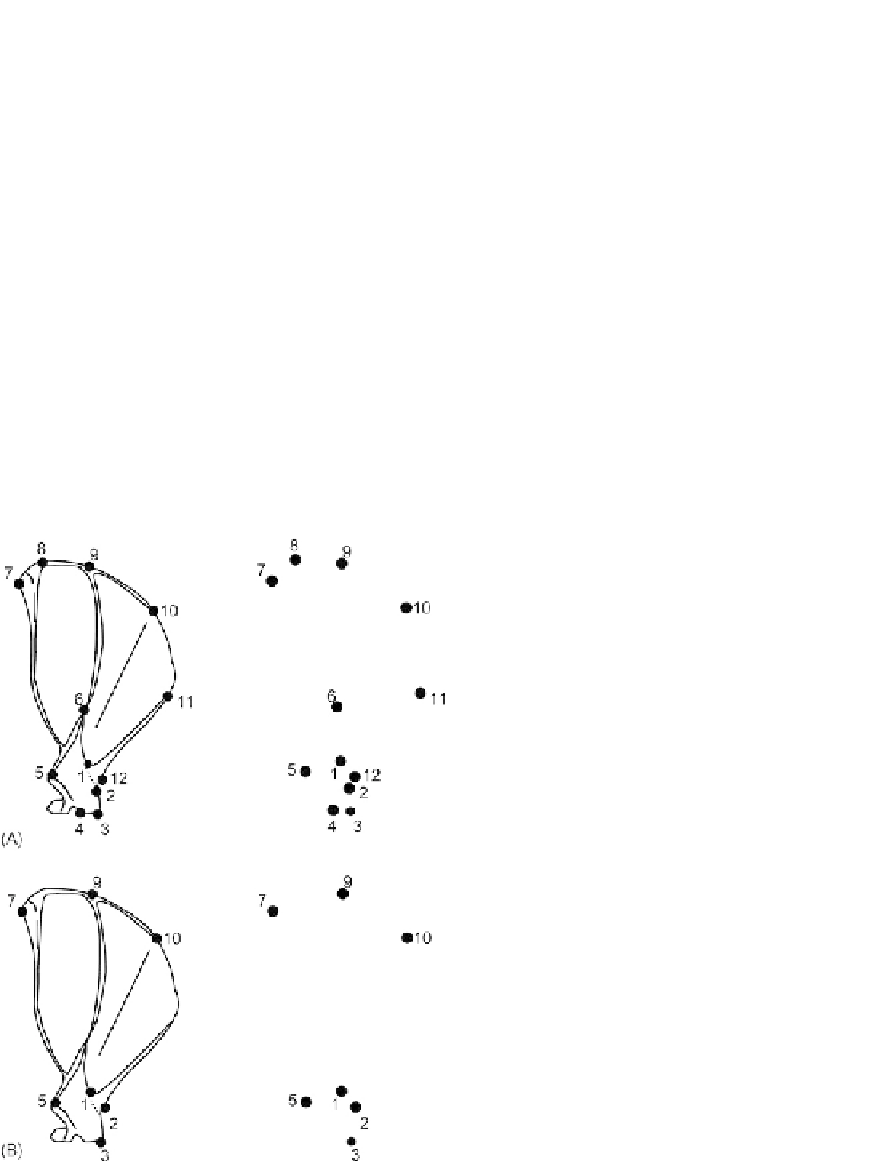Biology Reference
In-Depth Information
Adequate Coverage of the Form
A second important criterion, arguably as important as homology, is adequate coverage
of the form or, as
Roth (1993)
put it, comprehensive coverage. The importance of this crite-
rion should be self-evident because we cannot detect changes in shape without data, and
the landmarks are the data. Additionally, we cannot find changes within particular regions
unless we have landmarks within them. One way to decide if you have met this criterion
is to draw a picture of the landmarks without tracing the rest of the organism or, as we
did above, removing the photograph and looking only at the configuration of the land-
marks. Another example is a squirrel scapula, one of the examples discussed later in this
chapter. Whereas in
Figure 2.4A
the form of the scapula is present, even if the outline of
the structure is erased, in
Figure 2.4B
, it is virtually impossible to tell that the structure is
a scapula. Given the landmarks shown in
Figure 2.4B
, we cannot tell what is happening
between the peripheral points (meaning those on the outline). Therefore, if there are any
localized changes in scapula shape, we will not find them.
Sometimes we cannot find landmarks where we need them. For example, there are no
discrete points just anterior and posterior to the eye of a piranha (another of the examples
discussed below). We need that information to analyze changes in relative size of the eye,
FIGURE 2.4
Landmark schemes for a scapula.
(A) The form of the scapula is evident in the land-
marks; (B) present even if the outline of the structure
is erased; in (B) the form of the scapula is barely
detectable in this configuration of landmarks.


